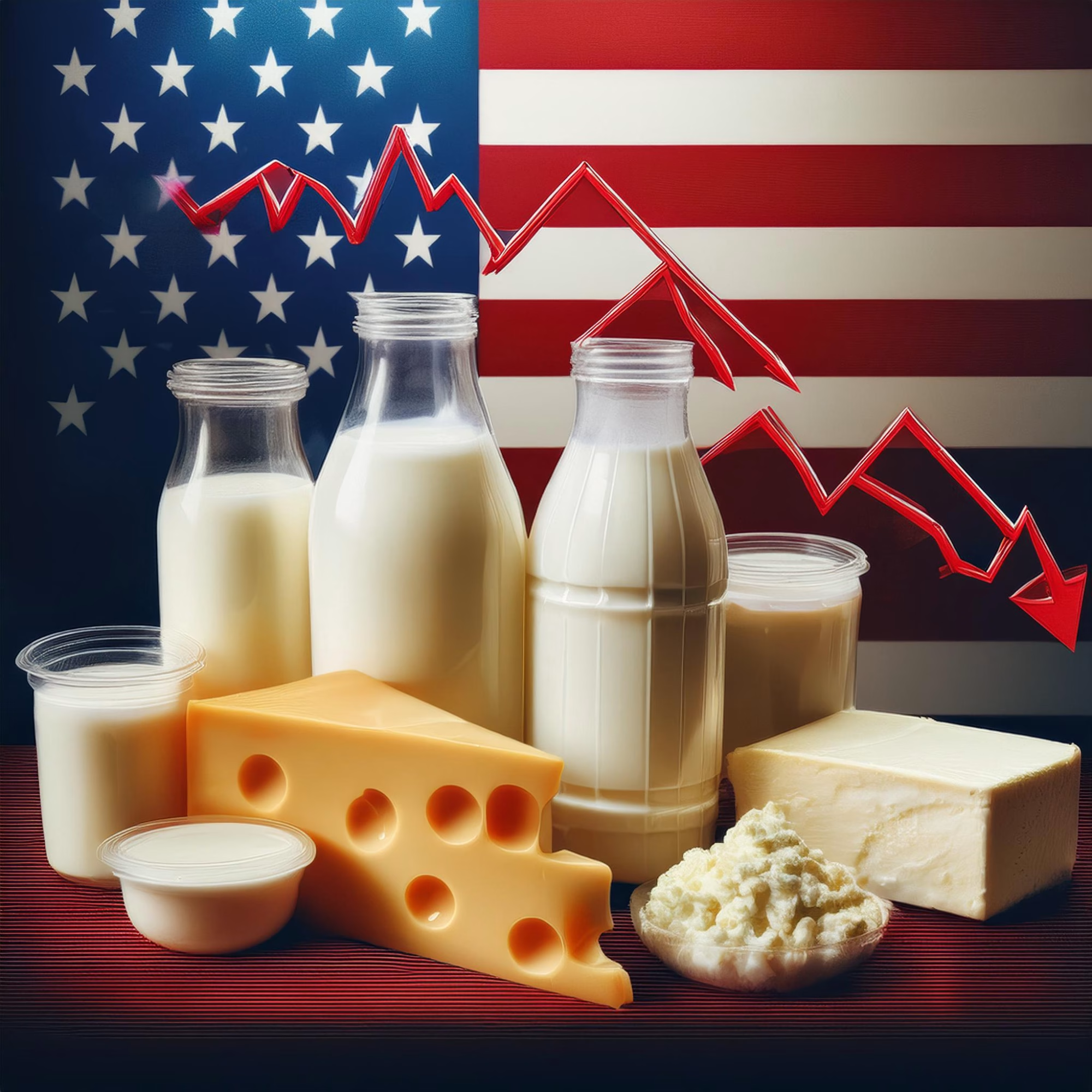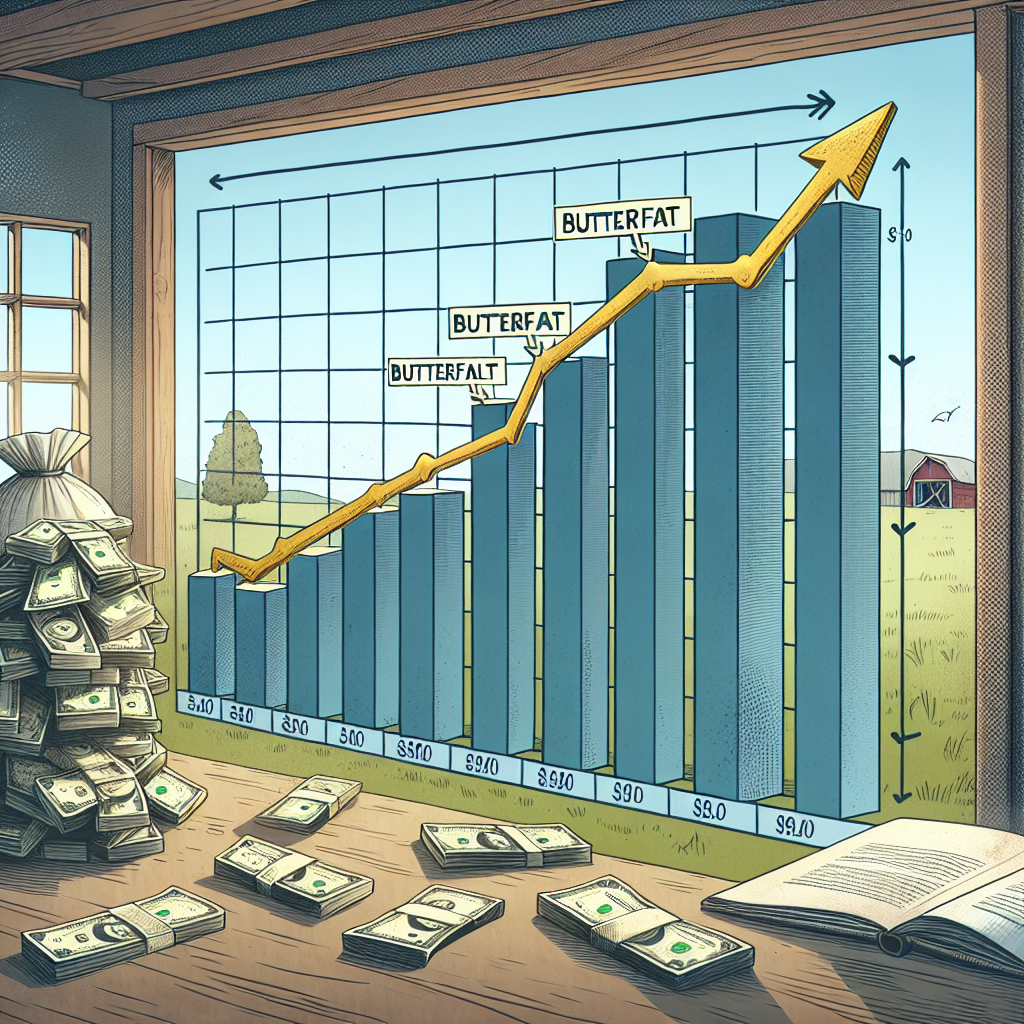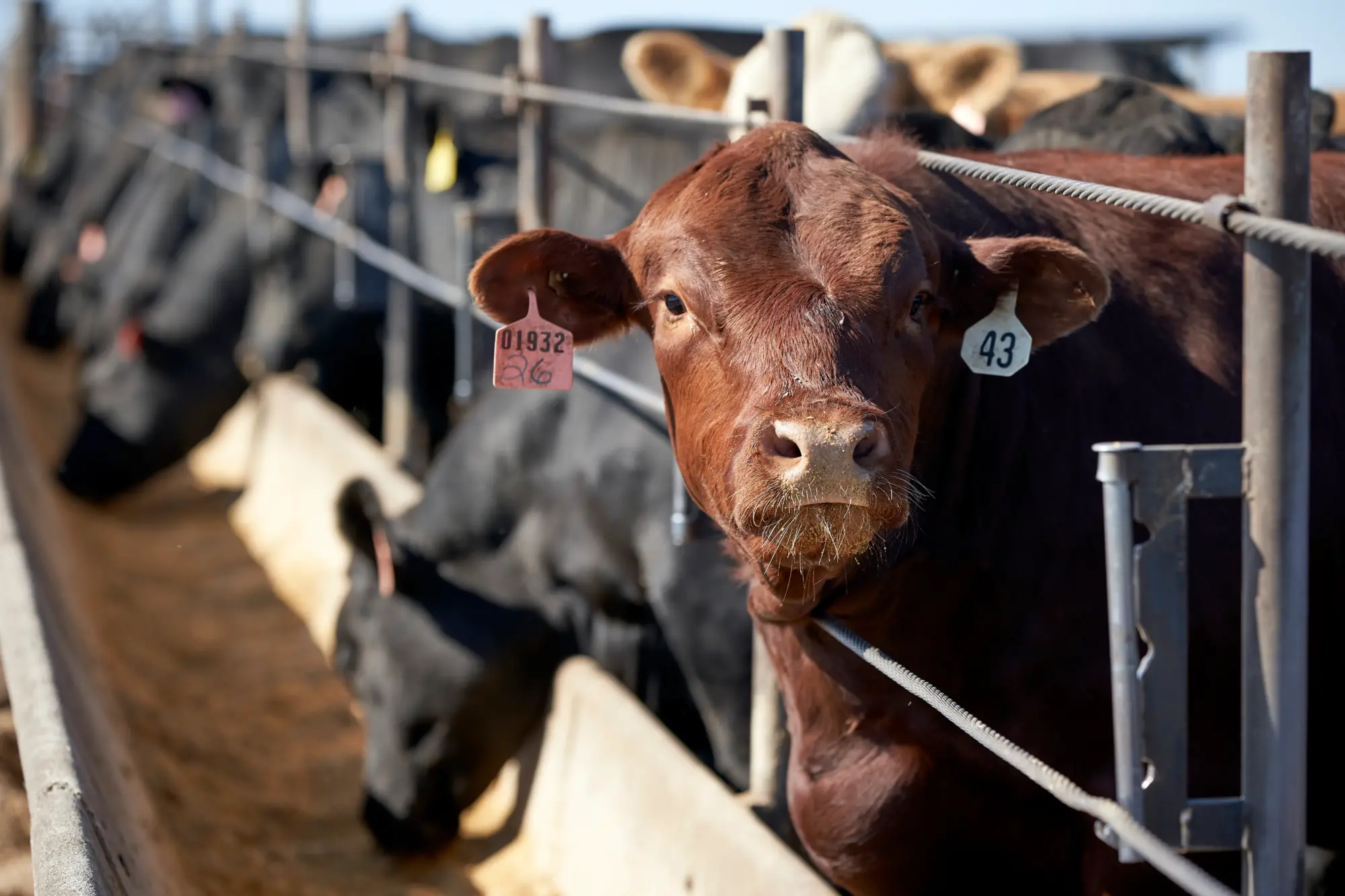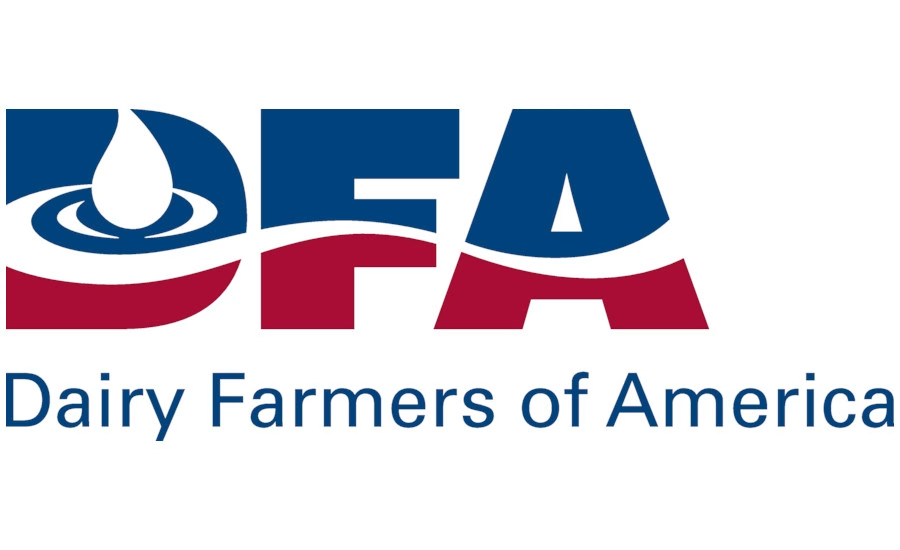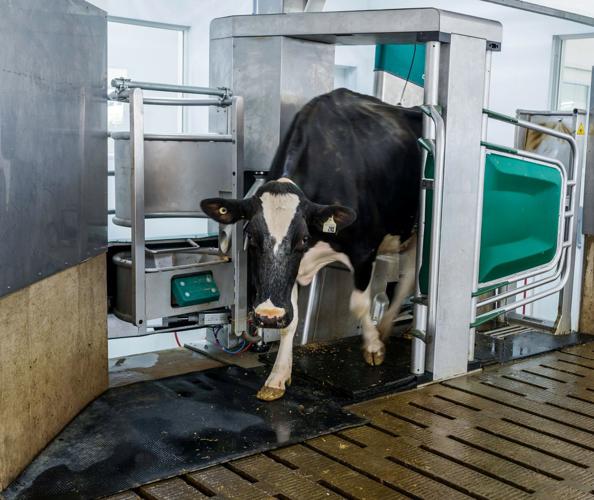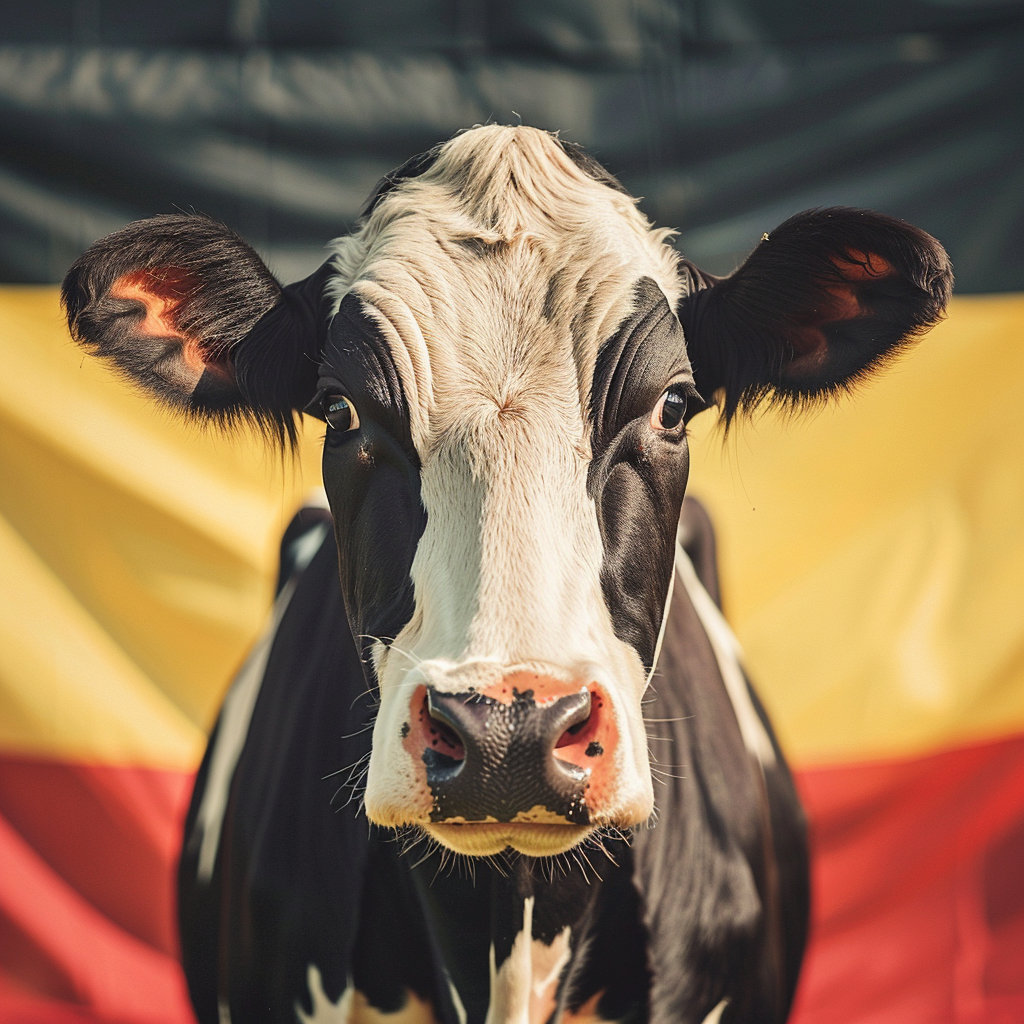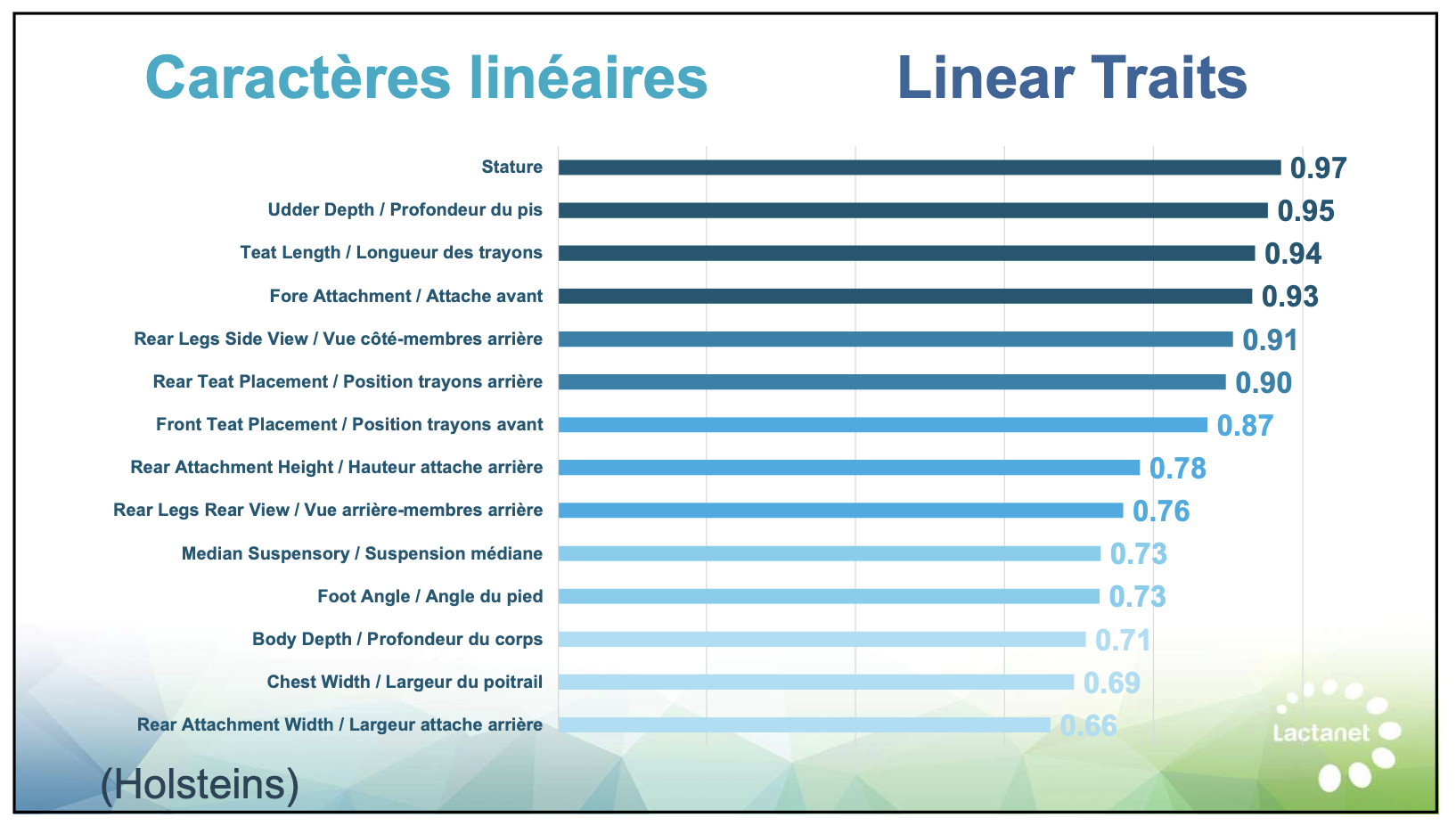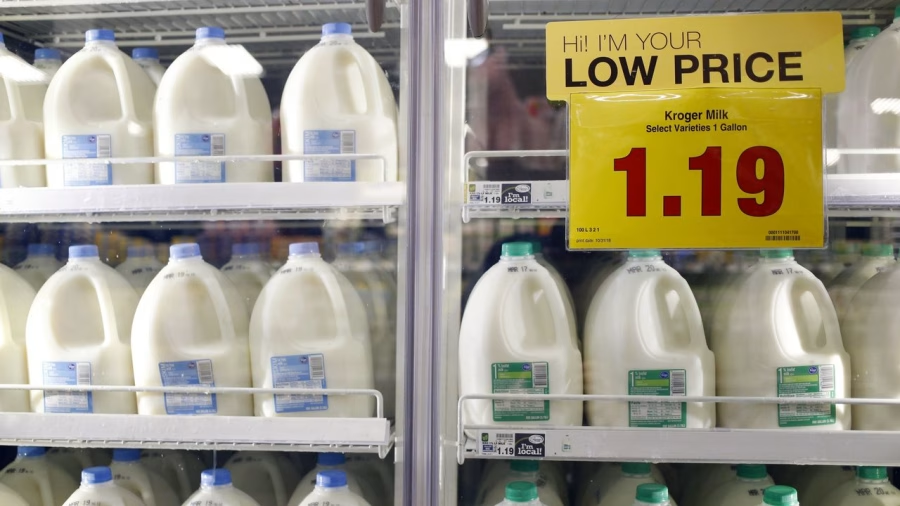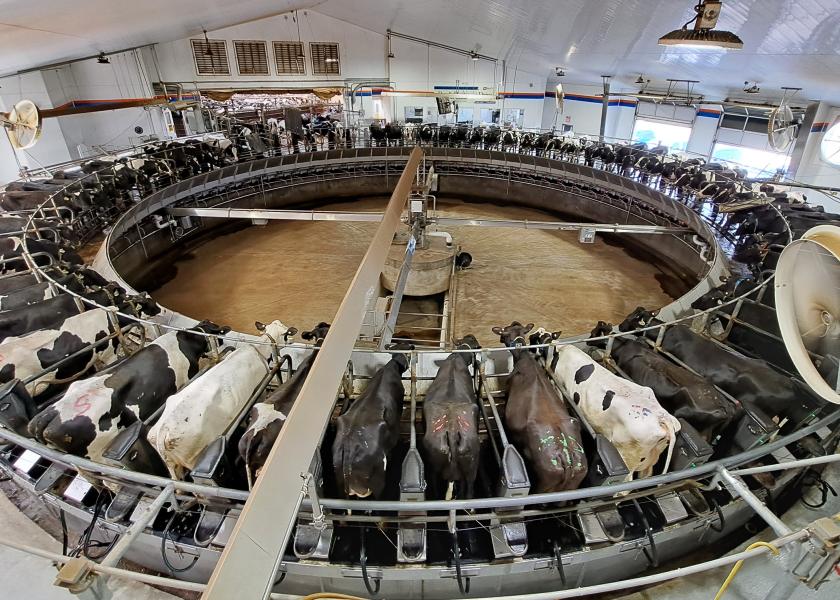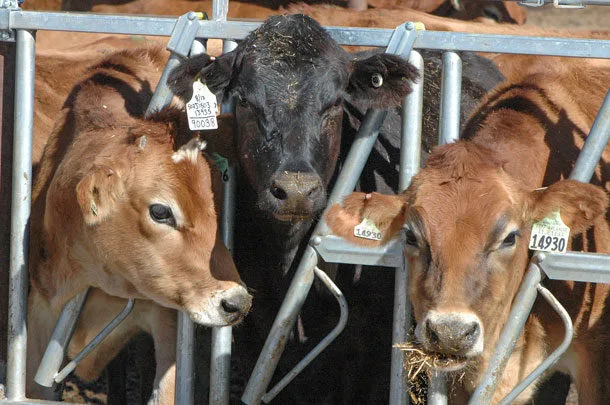Boost your dairy farm’s efficiency with nutritional strategies for automated milking systems. Discover how diet impacts milk production and milking behavior.
Imagine a system that not only milks your cows precisely but also provides them with specialized feed, all while freeing up your time. This is the reality of Automated Milking Systems (AMS), a disruptive technology transforming the dairy sector. As more farms use these technologies, improving their efficiency has become critical. AMS simplifies milking and delivers valuable data for better herd management and production. The efficiency of AMS is highly related to the farm’s nutritional strategy. Nutritional techniques are the foundation of productivity. When used with AMS, the proper feed formulations can significantly increase milk output and enhance quality, making it a powerful tool for dairy farmers. Join us as we investigate nutritional practices on AMS-equipped dairy farms, emphasizing critical food components and their influence on milk production and milking habits, allowing you to maximize your AMS.
Automated Milking Systems: Revolutionizing Dairy Farming for Better Productivity and Welfare
AMS has changed dairy production, providing enormous advantages to farmers. It increases flexibility, reduces the need for a set milking schedule, and enhances work-life balance. However, it’s important to note that AMS presents challenges, such as the initial installation cost and potential technical issues. AMS also collects information on each cow’s milk output, composition, and health, which aids in improved herd management. Furthermore, AMS may boost milk production by allowing more frequent milking and decreasing the stress associated with conventional milking regimens.
AMS aids dairy producers by allowing them to manage their time and eliminate the requirement for a set milking schedule. This promotes work-life balance and collects data on each cow’s milk output, composition, and health, allowing for improved herd management. For instance, AMS can provide real-time data on milk yield, fat, and protein content and even detect early signs of health issues in cows.
There are two kinds of AMS systems: free-flow and guided-flow. Cows may visit the milking units anytime using free-flow systems, which generally leads to improved milking frequency and milk output. However, careful management is essential to prevent congestion. Guided-flow systems employ lanes and gates to steer cows, improve milking unit utilization, and shorten wait times. They may reach different voluntary milking levels than free-flow systems.
Milking behavior varies per system. Free-flow systems promote more frequent milking, which may increase milk output but result in more milking refusals if not adequately controlled. On the other hand, guided-flow systems provide a regulated environment, minimizing refusals and giving you a sense of control over the milking process.
As a dairy producer, understanding the specifics of each AMS type and how it affects cow behavior and milking performance is crucial. This knowledge empowers you to choose the optimal strategy, leading to increased production, animal care, and sustainability in dairy farming. It’s about being in the know and making informed decisions.
Optimizing Dairy Cow Nutrition with Partial Mixed Rations (PMR) and Automated Milking Systems (AMS)
Partial Mixed Rations (PMR) are essential for dairy cow nutrition, particularly on farms equipped with Automated Milking Systems (AMS). PMR gives cows a semi-complete diet at the feed bunk, supplemented with concentrated feeds at the AMS. This dual technique promotes cow health and production by providing a balanced intake of vital nutrients.
A PMR contains forages, cereals, proteins, vitamins, and minerals. Critical nutrients like corn and barley silage provide fermentable carbohydrates for increased milk output. Higher ether extract (EE) levels in PMR have been related to higher milk production because they provide the energy required for lactation.
The PMR’s constituents significantly impact the composition of milk. Forage varieties such as haylage and corn silage influence milk protein percentages, while the PMR to AMS concentrate ratio influences milk fat levels. A higher PMR-to-AMS concentrate ratio increases milk fat content, ensuring dairy products satisfy quality criteria.
Overall, well-formulated PMR improves dairy herd nutrition and directly influences milk production efficiency and composition. This approach is critical for AMS-equipped farms, where precision nutrition control improves production and herd welfare.
The Role of Concentrate Feed in Enhancing Automated Milking System Efficiency
The concentrate feed provided to the cows is crucial to any automated milking system (AMS). This concentrate is a strategic tool for influencing cow behavior, increasing milking efficiency, and providing nutrients. The precisely balanced nutritional content of the AMS concentrate is critical in motivating cows to attend milking stations more often, resulting in increased milk output.
Importance of Concentrate in AMS
The concentration given by the AMS motivates cows to enter the milking unit. This continual intake guarantees that milking sessions are evenly distributed throughout the day, considerably increasing milk output and consistency. Customizing the time and amount of concentrate for each cow, depending on their demands and lactation stage, improves feeding efficiency and responsiveness.
Impact on Milking Frequency
The nutrient-rich concentrate in the AMS is intended to be very tasty, causing cows to seek it out many times daily. According to research, farms using free-flow cow traffic systems often see higher milking rates, partly influenced by the appeal of the AMS concentrate. Farmers may take advantage of the cows’ natural eating behavior by providing a balanced and delicious combination, which leads to more frequent trips to the milking station and, as a result, increased output.
Influence on Milk Yield and Components
The nutritious composition of AMS concentrate is strongly related to milk production and significant components such as fat and protein levels. Concentrates high in starch and energy may increase milk output by supplying necessary nutrients for cows to maintain high production levels. Specific elements, such as barley fodder, have been shown to contribute more favorably to milk output than other fodder.
Furthermore, the balance of nutrients might influence milk composition. A more excellent PMR-to-AMS concentrate ratio is generally associated with higher milk fat levels. Simultaneously, the whole diet’s net energy for lactation may increase both fat and protein levels in milk. In contrast, an imbalance, such as excessive non-fiber carbohydrate (NFC) content in the partially mixed diet, might harm milking behavior and milk composition.
The strategic formulation of the concentrates available at the AMS is crucial to attaining peak dairy output. Understanding and utilizing its nutritional effect may help farmers improve milking efficiency and quality.
Navigating Nutritional Complexity: Key Dietary Factors That Influence Milk Yield and Milking Behavior in Automated Milking Systems
Research published in the Journal of Dairy Science underlines the importance of food on milk production and milking behavior in dairy farms that use Automated Milking Systems (AMS). Ether extract (EE) in the Partial Mixed Ratio (PMR) had a favorable connection with milk production. A one-percentage-point increase in EE increased milk production by 0.97 kg/day, demonstrating the importance of including fat in the diet to promote milk supply.
| Key Nutritional Factor | Impact on Milk Production/Milking Behavior | Specific Findings |
|---|---|---|
| PMR Ether Extract (EE) Concentration | Positive on Milk Yield | +0.97 kg/day per percentage point increase |
| Barley Silage as Major Forage Source | Positive on Milk Yield | +2.18 kg/day compared to haylage |
| Corn Silage as Major Forage Source | Tendency to Increase Milk Yield | +1.23 kg/day compared to haylage |
| PMR-to-AMS Concentrate Ratio | Positive on Milk Fat Content | +0.02 percentage points per unit increase |
| Total Diet Net Energy for Lactation | Positive on Milk Fat Content | +0.046 percentage points per 0.1 Mcal/kg increase |
| Forage Percentage of PMR | Positive on Milk Protein Content | +0.003 percentage points per percentage point increase |
| Total Diet Starch Percentage | Positive on Milk Protein Content | +0.009 percentage points per percentage point increase |
| Free-Flow Cow Traffic System | Positive on Milking Frequency | +0.62 milkings/day |
| Feed Push-Up Frequency | Positive on Milking Frequency | +0.013 milkings/day per additional feed push-up |
| Barley Silage as Major Forage Source | Positive on Milking Refusal Frequency | +0.58 refusals/day compared to haylage or corn silage |
Non-fiber carbohydrates have a dual function. While higher NFC concentration increased milk supply, it decreased milk fat and milking frequency. Each percentage point increase in NFC lowered the milk fat % and the frequency of daily milking. This highlights the necessity for a careful balance of NFC to minimize deleterious effects on milk composition and milking frequency.
The choice of feed (barley hay, maize silage, or haylage) was equally important. Farms that used barley silage had a much higher milk output (+2.18 kg/day) than haylage. Corn silage increased milk production (+1.23 kg/day), although it was related to reduced milk protein levels. This shows a trade-off between increased milk volume and protein content.
These data emphasize the complexities of diet design in dairy farming with AMS. Each component—ether extract, NFC, and forage type—uniquely impacts milk production and quality, necessitating a comprehensive nutrition management strategy.
Understanding the Multifaceted Nutritional Dynamics on Farms with Automated Milking Systems (AMS)
Understanding the diverse nutritional dynamics of AMS farms is critical to optimizing milk yield and quality. Here’s what our study found:
Milk Yield: Higher milk yields were linked to increased ether extract (EE) in the PMR, boosting yield by 0.97 kg/day per percentage point. Barley silage increased yield by 2.18 kg/day compared to haylage, with corn silage also adding 1.23 kg/day.
Milk Fat Content: Milk fat rose with a higher PMR-to-AMS concentrate ratio and total diet energy but decreased with more non-fiber carbohydrates (NFC) in the PMR.
Milk Protein Content: More forage in the PMR and higher starch levels improved protein content. However, corn silage slightly reduced protein compared to haylage.
Practical Recommendations:
- Enhance Ether Extract: Boost EE in PMR to increase milk yield while ensuring cow health.
- Optimize Forage Choices: Use barley or corn silage over haylage for higher yields.
- Adjust PMR-to-AMS Ratio: Increase this ratio to enhance milk fat content.
- Manage Non-Fiber Carbohydrates: Control NFC in PMR to maintain milk fat content.
- Prioritize Forage Content: Increase forage in PMR to boost milk protein and starch levels.
By refining diets and monitoring essential nutrients, AMS farms can maximize milk production, fat, and protein content, enhancing overall productivity and dairy quality.
Decoding Milking Behavior: A Window into Herd Management Efficiency in AMS-Equipped Farms
Milking behavior in dairy cows is a crucial indicator of herd management efficacy, particularly on automated milking systems (AMS) farms. The research found that the average milking frequency was 2.77 times per day, significantly impacted by the cow traffic system. Farms using free-flow systems produced 0.62 more milk per day. This implies that allowing cows to walk freely increases milking frequency and productivity.
Feed push-ups were also important, with each extra push-up resulting in 0.013 more milking each day. Dr. Trevor DeVries found that frequent feed push-ups lead to increased milk output, highlighting the need to provide regular availability of fresh feed to encourage cows to visit the AMS more often.
However, greater non-fiber carbohydrate (NFC) content in the partial mixed ration (PMR) and a higher forage proportion in the total diet reduced milking frequency. Each percentage point increase in forage corresponded with a 0.017 reduction in daily milking, indicating that high-fiber diets may delay digestion and minimize AMS visits.
The research indicated an average of 1.49 refusals per day regarding refusal frequency. Higher refusal rates were associated with free-flow systems and barley silage diets, with increases of 0.84 and 0.58 refusals per day, respectively, compared to corn silage or haylage. This shows a possible disadvantage of specific traffic patterns and feed kinds, which may result in more cows not being milked.
These findings emphasize the need for deliberate feeding control in AMS situations. Frequent feed push-ups and proper fodder selection are critical for improving milking behavior and farm output.
Actionable Nutritional Strategies for Enhancing Milk Production and Welfare in AMS-Equipped Dairy Farms
For dairy farmers using Automated Milking Systems (AMS), fine-tuning nutrition is crucial for boosting milk production and improving cow welfare. Here are some practical tips:
- Balanced Diets: Ensure your Partial Mixed Ration (PMR) is balanced with proper energy, fiber, and protein. Use a mix of forages like corn or barley silage, which can boost milk yield.
- Quality Concentrate Feed: The concentrate feed at the AMS should complement the PMR. High-quality concentrate with suitable starch and energy levels promotes efficient milk production.
- Regular Feed Push-Ups: Increase feed push-ups to encourage higher milking frequency and feed intake and ensure cows always have access to fresh feed.
- Monitor Milking Behavior: Use AMS data to track milking frequency, refusals, and patterns. Adjust cow traffic setups for optimal results.
- Seasonal Adjustments: Adjust feed formulations for seasonal forage quality changes and regularly test forage and PMR to ensure consistency.
- Expert Insights: Consult dairy nutritionists and stay updated with the latest research to refine your nutritional strategies.
- Data-Driven Decisions: Use AMS data to inform diet formulation and feeding management, leveraging correlations to improve milking behavior.
Implementing these strategies can enhance AMS efficiency and farm productivity. Continuous monitoring and expert advice will ensure optimal nutrition and milking performance.
The Bottom Line
The research on nutritional strategies in dairy farms using Automated Milking Systems (AMS) emphasizes the importance of personalized meals in improving production and milking behavior. Key results show that Partial Mixed Ration (PMR) ether extract, forage sources such as barley and maize silage, and dietary ratios contribute to higher milk output and quality. Furthermore, nutritional parameters considerably impact milking frequency and behavior, emphasizing the need for accurate feeding procedures.
Adopting evidence-based methods is critical for dairy producers. Customized diets, optimized PMR-to-AMS concentrate ratios, and careful pasture selection may improve milk output and herd management considerably. Optimizing feeding procedures to fulfill cow nutritional demands may result in cost-effective and successful dairy farms. The results support rigorous feed management, urging farmers to use suggested methods to fully benefit from AMS technology for increased farm output and animal comfort.
Key Insights:
- Positive Impact of Ether Extract (EE): Higher concentrations of EE in Partial Mixed Rations (PMR) significantly boost milk production by approximately 0.97 kg per day for each percentage point increase in EE.
- Forage Type Matters: Dairy farms utilizing barley silage as the major forage source produce about 2.18 kg more milk per day compared to those using haylage, while corn silage also shows a significant positive impact with an increase of 1.23 kg per day.
- Optimizing Milk Fat Content: Greater milk fat content is linked with a higher PMR-to-AMS concentrate ratio and higher total diet net energy for lactation, albeit with a lower percentage of Non-Fiber Carbohydrates (NFC) in the PMR.
- Influence on Milk Protein Content: Higher forage percentage and starch content in the PMR are positively associated with milk protein content, while the use of corn silage as a major forage source has a negative impact.
- Milking Frequency Enhancement: Free-flow cow traffic systems and increased feed push-up frequency enhance milking frequency, although higher forage percentages and NFC content in PMR can reduce it.
- Milking Refusal Factors: Farms with free-flow cow traffic and those feeding barley silage experience higher rates of milking refusals compared to guided flow systems and farms feeding corn silage or haylage.
Summary:
The study provides valuable insights into the nutritional strategies and dietary factors that significantly impact milk production and milking behavior on dairy farms equipped with Automated Milking Systems (AMS). By analyzing data and employing multivariable regression models, the research highlights the importance of precise nutrient formulations and feeding management practices. Key findings demonstrate that milk yield and quality are positively influenced by specific dietary components such as barley silage and partial mixed ration ether extract concentration, while factors like free-flow cow traffic systems and frequent feed push-ups enhance milking frequency, albeit with some trade-offs in milking refusals. These insights equip dairy farmers with actionable strategies to optimize both productivity and animal welfare on their AMS-equipped farms.
Learn more:
- Boosting Dairy Farm Profits: 7 Effective Strategies to Enhance Cash Flow
- Robotic Milking: Is It the Right Choice for Your Dairy Farm?
- Harnessing Technology, Tools, and Innovative Practices to Empower Dairy Farmers
 Join the Revolution!
Join the Revolution!
Bullvine Daily is your essential e-zine for staying ahead in the dairy industry. With over 30,000 subscribers, we bring you the week’s top news, helping you manage tasks efficiently. Stay informed about milk production, tech adoption, and more, so you can concentrate on your dairy operations.







 Join the Revolution!
Join the Revolution!


